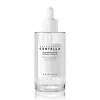What's inside
What's inside
 Key Ingredients
Key Ingredients

 Benefits
Benefits

 Concerns
Concerns

No concerns
 Ingredients Side-by-side
Ingredients Side-by-side

Water
Skin ConditioningButylene Glycol
HumectantNiacinamide
SmoothingGlycerin
HumectantTranexamic Acid
Astringent1,2-Hexanediol
Skin ConditioningBetaine
HumectantCentella Asiatica Extract
CleansingZea Mays Starch
AbsorbentXanthan Gum
EmulsifyingMicrocrystalline Cellulose
AbsorbentMannitol
HumectantPanthenol
Skin ConditioningPentylene Glycol
Skin ConditioningEthylhexylglycerin
Skin ConditioningHydroxyethylcellulose
Emulsion StabilisingMadecassoside
AntioxidantAcrylates/C10-30 Alkyl Acrylate Crosspolymer
Emulsion StabilisingArginine
MaskingHydrogenated Lecithin
EmulsifyingXylitylglucoside
HumectantAnhydroxylitol
HumectantXylitol
HumectantGlucose
Humectant3-O-Ethyl Ascorbic Acid
Skin ConditioningLactobacillus Ferment
Skin ConditioningWater, Butylene Glycol, Niacinamide, Glycerin, Tranexamic Acid, 1,2-Hexanediol, Betaine, Centella Asiatica Extract, Zea Mays Starch, Xanthan Gum, Microcrystalline Cellulose, Mannitol, Panthenol, Pentylene Glycol, Ethylhexylglycerin, Hydroxyethylcellulose, Madecassoside, Acrylates/C10-30 Alkyl Acrylate Crosspolymer, Arginine, Hydrogenated Lecithin, Xylitylglucoside, Anhydroxylitol, Xylitol, Glucose, 3-O-Ethyl Ascorbic Acid, Lactobacillus Ferment
Dimethicone
EmollientAloe Barbadensis Leaf Juice
Skin ConditioningC13-16 Isoparaffin
SolventCoco-Caprylate/Caprate
EmollientSilica
AbrasiveCI 77891
Cosmetic ColorantCetearyl Dimethicone Crosspolymer
Glycerin
HumectantEthylhexyl Palmitate
EmollientCetyl PEG/PPG-10/1 Dimethicone
EmulsifyingPolymethylsilsesquioxane
Sodium Chloride
MaskingArgania Spinosa Kernel Oil
EmollientTocopheryl Acetate
AntioxidantSodium Hyaluronate
HumectantIsohexadecane
EmollientCellulose
AbsorbentCellulose Acetate
Propylene Glycol Stearate
Skin ConditioningAcrylates/Ammonium Methacrylate Copolymer
PEG-40 Stearate
EmulsifyingBoron Nitride
AbsorbentEthylhexylglycerin
Skin ConditioningCetearyl Methicone
Skin ConditioningSteareth-2
EmulsifyingSteareth-21
CleansingMagnesium Stearate
Cosmetic ColorantCaprylyl Glycol
EmollientSilica Dimethyl Silylate
EmollientButylene Glycol
HumectantPentylene Glycol
Skin ConditioningPhenoxyethanol
PreservativeSodium Benzoate
MaskingCI 77492
Cosmetic ColorantCI 77491
Cosmetic ColorantCI 77499
Cosmetic ColorantDimethicone, Aloe Barbadensis Leaf Juice, C13-16 Isoparaffin, Coco-Caprylate/Caprate, Silica, CI 77891, Cetearyl Dimethicone Crosspolymer, Glycerin, Ethylhexyl Palmitate, Cetyl PEG/PPG-10/1 Dimethicone, Polymethylsilsesquioxane, Sodium Chloride, Argania Spinosa Kernel Oil, Tocopheryl Acetate, Sodium Hyaluronate, Isohexadecane, Cellulose, Cellulose Acetate, Propylene Glycol Stearate, Acrylates/Ammonium Methacrylate Copolymer, PEG-40 Stearate, Boron Nitride, Ethylhexylglycerin, Cetearyl Methicone, Steareth-2, Steareth-21, Magnesium Stearate, Caprylyl Glycol, Silica Dimethyl Silylate, Butylene Glycol, Pentylene Glycol, Phenoxyethanol, Sodium Benzoate, CI 77492, CI 77491, CI 77499
 Reviews
Reviews

Ingredients Explained
These ingredients are found in both products.
Ingredients higher up in an ingredient list are typically present in a larger amount.
Butylene Glycol (or BG) is used within cosmetic products for a few different reasons:
Overall, Butylene Glycol is a safe and well-rounded ingredient that works well with other ingredients.
Though this ingredient works well with most skin types, some people with sensitive skin may experience a reaction such as allergic rashes, closed comedones, or itchiness.
Learn more about Butylene GlycolEthylhexylglycerin (we can't pronounce this either) is commonly used as a preservative and skin softener. It is derived from glyceryl.
You might see Ethylhexylglycerin often paired with other preservatives such as phenoxyethanol. Ethylhexylglycerin has been found to increase the effectiveness of these other preservatives.
Glycerin is already naturally found in your skin. It helps moisturize and protect your skin.
A study from 2016 found glycerin to be more effective as a humectant than AHAs and hyaluronic acid.
As a humectant, it helps the skin stay hydrated by pulling moisture to your skin. The low molecular weight of glycerin allows it to pull moisture into the deeper layers of your skin.
Hydrated skin improves your skin barrier; Your skin barrier helps protect against irritants and bacteria.
Glycerin has also been found to have antimicrobial and antiviral properties. Due to these properties, glycerin is often used in wound and burn treatments.
In cosmetics, glycerin is usually derived from plants such as soybean or palm. However, it can also be sourced from animals, such as tallow or animal fat.
This ingredient is organic, colorless, odorless, and non-toxic.
Glycerin is the name for this ingredient in American English. British English uses Glycerol/Glycerine.
Learn more about GlycerinPentylene glycol is typically used within a product to thicken it. It also adds a smooth, soft, and moisturizing feel to the product. It is naturally found in plants such as sugar beets.
The hydrophilic trait of Pentylene Glycol makes it a humectant. As a humectant, Pentylene Glycol helps draw moisture from the air to your skin. This can help keep your skin hydrated.
This property also makes Pentylene Glycol a great texture enhancer. It can also help thicken or stabilize a product.
Pentylene Glycol also acts as a mild preservative and helps to keep a product microbe-free.
Some people may experience mild eye and skin irritation from Pentylene Glycol. We always recommend speaking with a professional about using this ingredient in your routine.
Pentylene Glycol has a low molecular weight and is part of the 1,2-glycol family.
Learn more about Pentylene Glycol